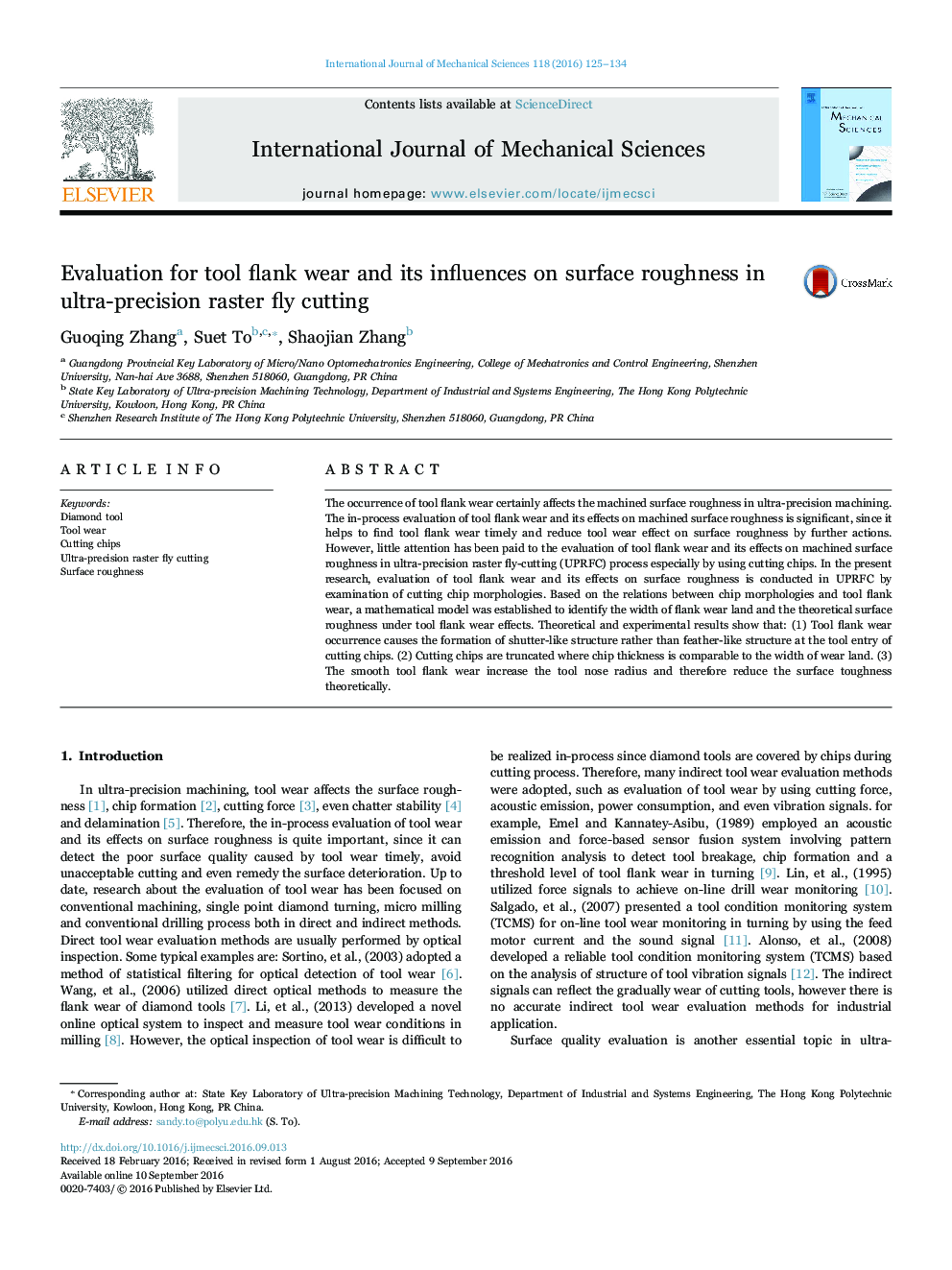| Article ID | Journal | Published Year | Pages | File Type |
|---|---|---|---|---|
| 5016397 | International Journal of Mechanical Sciences | 2016 | 10 Pages |
Abstract
The occurrence of tool flank wear certainly affects the machined surface roughness in ultra-precision machining. The in-process evaluation of tool flank wear and its effects on machined surface roughness is significant, since it helps to find tool flank wear timely and reduce tool wear effect on surface roughness by further actions. However, little attention has been paid to the evaluation of tool flank wear and its effects on machined surface roughness in ultra-precision raster fly-cutting (UPRFC) process especially by using cutting chips. In the present research, evaluation of tool flank wear and its effects on surface roughness is conducted in UPRFC by examination of cutting chip morphologies. Based on the relations between chip morphologies and tool flank wear, a mathematical model was established to identify the width of flank wear land and the theoretical surface roughness under tool flank wear effects. Theoretical and experimental results show that: (1) Tool flank wear occurrence causes the formation of shutter-like structure rather than feather-like structure at the tool entry of cutting chips. (2) Cutting chips are truncated where chip thickness is comparable to the width of wear land. (3) The smooth tool flank wear increase the tool nose radius and therefore reduce the surface toughness theoretically.
Related Topics
Physical Sciences and Engineering
Engineering
Mechanical Engineering
Authors
Guoqing Zhang, Suet To, Shaojian Zhang,
